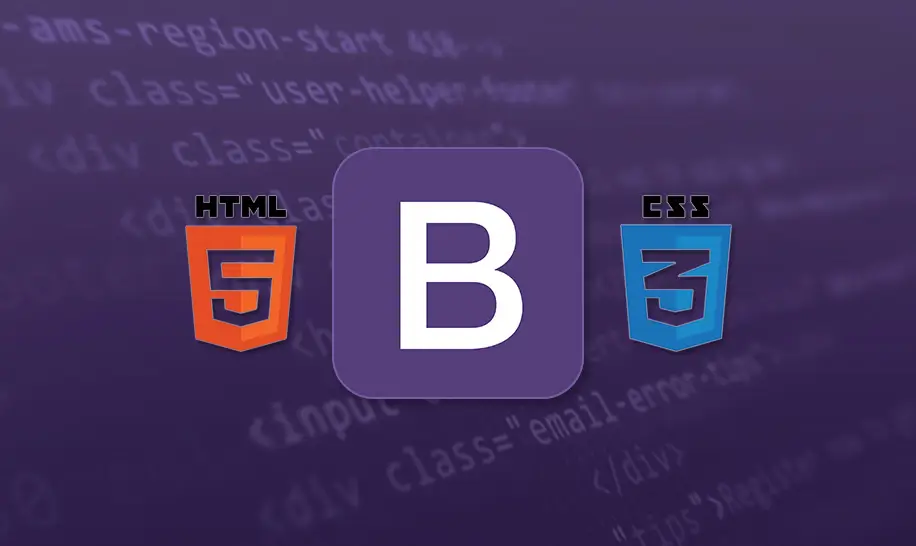
Bootstrap framework is a good choice or not?
When it comes to web development, choosing the right framework can make or break your project. Bootstrap has been a popular choice for many developers over the years, but is it truly the best option for every project? In this blog post, we'll take a comprehensive look at both the advantages and disadvantages of using the Bootstrap framework, helping you make an informed decision for your next web development project.
The Drawbacks of Bootstrap
Limited Container Width in Full-Screen Views
One of the most noticeable limitations of Bootstrap is its container max-width. The standard Bootstrap container has a maximum width of 1140px, which might have been sufficient in the past but falls short on modern wide-screen monitors that typically display 1920 pixels in width. This discrepancy can result in websites that don't fully utilize the available screen real estate, potentially making your design appear cramped or outdated on larger displays. While Bootstrap does offer a "container-fluid" class that allows content to stretch the full width of the viewport, many designers find that the standard container dimensions don't align well with contemporary design aesthetics and user expectations for spacious, modern layouts.
Challenges with Pixel-Perfect Design
If you're aiming for pixel-perfect precision in your web designs, Bootstrap might not be your best ally. The framework is designed to provide flexibility and responsiveness rather than exact measurements. For instance, if your design requires a specific block element to be exactly 978 pixels wide, Bootstrap won't inherently support this dimension. You'll need to write custom CSS to achieve such specific measurements, which can negate some of the time-saving benefits that Bootstrap is known for. This limitation has led to a common misconception that using Bootstrap means you don't need to learn CSS—an idea that couldn't be further from the truth. While Bootstrap can handle many styling tasks, creating truly custom and precise designs still requires hands-on CSS knowledge and implementation.
Bloated CSS File and Unwanted Classes
The main Bootstrap CSS file is quite substantial, weighing in at approximately 200KB. For a CSS file, this is considered quite large and can impact page load times if not optimized properly. Moreover, much of this CSS may consist of classes and styles that you don't actually need for your specific project. Many developers find themselves in the position of having to remove or override numerous Bootstrap classes to suit their design requirements. For example, some developers might dislike Bootstrap's default navigation menu styling and choose to replace it with a custom solution, requiring them to delete or override the relevant CSS classes. This process of stripping down Bootstrap to its essential components can be time-consuming and somewhat ironic—using a framework that's supposed to save time while spending time removing its features.
Inadequate Documentation for CSS Classes
While Bootstrap does offer documentation, it doesn't provide the comprehensive, at-a-glance reference that some developers might expect. Unlike tools like Emmet, which offer cheat sheets with quick references to all available classes and components, Bootstrap requires developers to search through various pages or use external resources to understand all the available classes and their functionalities. This can be particularly challenging for newcomers who might struggle to remember class names and their corresponding styles. The lack of a consolidated reference means developers often need to rely on memory or frequent Google searches to recall the appropriate classes for different design elements, which can slow down the development process.
Integration Challenges with Other Frameworks
Using Bootstrap in conjunction with other front-end frameworks can lead to naming conflicts and styling inconsistencies. Many frameworks use common class names like "container," "row," and "col" for their layout systems, which can cause conflicts when multiple frameworks are included in the same project. The framework that's loaded last typically overrides the styles of previously loaded frameworks, leading to unexpected design behaviors. This means developers need to exercise caution when combining Bootstrap with other libraries or frameworks, potentially requiring additional effort to resolve conflicts or create custom naming conventions to avoid styling collisions.
The Advantages of Bootstrap
Extensive Predefined CSS Classes
Despite its drawbacks, Bootstrap shines in its offering of a vast library of predefined CSS classes that cover a wide range of common web design elements. From layout grids to form styling, navigation bars to responsive images, Bootstrap provides ready-made solutions that can significantly speed up development time. If your project doesn't require pixel-perfect precision or highly customized designs, Bootstrap can be an invaluable tool that allows you to focus on functionality rather than spending countless hours crafting CSS from scratch. Remembering a handful of class names can transform how you build websites, with Bootstrap handling the heavy lifting of consistent styling across various elements.
Cross-Browser Compatibility
One area where Bootstrap truly excels is its commitment to cross-browser compatibility. The framework includes vendor prefixes for all major browsers, ensuring that your website looks and functions consistently across different platforms. This is particularly valuable when supporting older browser versions, such as Internet Explorer, where additional polyfill libraries like bootstrap-ie8 can be incorporated to maintain functionality. For developers who need to support a broad range of browsers without investing excessive time in cross-browser testing and bug fixing, Bootstrap provides a reliable foundation that minimizes compatibility issues.
Strong Community Support and Resources
Bootstrap benefits from being one of the most popular front-end frameworks available today. This popularity translates to an abundance of learning resources, tutorials, and community support. Whether you're struggling with a specific implementation or looking for best practices, chances are high that someone else has encountered the same challenge and shared their solution online. From YouTube video tutorials to detailed blog posts and forum discussions, the Bootstrap community offers a wealth of knowledge that can help developers of all skill levels. Additionally, the framework receives regular updates, incorporating new features and improvements while maintaining backward compatibility for existing projects.
Personal Perspective on Using Bootstrap
In my own development practice, I've found that Bootstrap can be a valuable tool when used judiciously. While I acknowledge its limitations, I've developed strategies to work around them effectively. For instance, I typically create a customized version of Bootstrap where I remove unnecessary components and classes, reducing the file size significantly—from the original 200KB down to around 40KB for my specific needs. This customization process allows me to retain the benefits of Bootstrap's predefined classes while minimizing its drawbacks. I've also learned to complement Bootstrap with custom CSS for elements that require precise control, striking a balance between efficiency and design integrity.
Conclusion
Whether Bootstrap is the right choice for your project depends largely on your specific requirements and constraints. If you need rapid development of responsive websites with consistent cross-browser performance and don't require pixel-perfect precision, Bootstrap can be an excellent choice. Its extensive library of predefined classes and strong community support make it a powerful tool for many development scenarios.
However, if your project demands highly customized designs with specific measurements or you're working on a site that needs to fully utilize modern display capabilities, you might find Bootstrap's limitations frustrating. In such cases, considering other frameworks or adopting a more customized CSS approach could better serve your needs.
Ultimately, Bootstrap is just one tool among many in a developer's toolkit. Understanding both its strengths and weaknesses allows you to make informed decisions about when to leverage its capabilities and when to explore alternative solutions. For me, the key has been customization—taking what Bootstrap offers and adapting it to fit the specific demands of each project, rather than accepting it as a one-size-fits-all solution.



